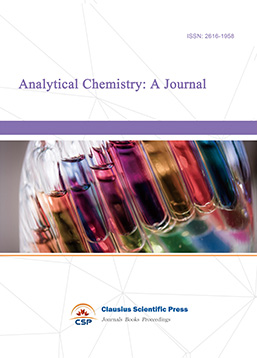Development of Sweat Latent Fingerprints on Common Coated Fabrics
DOI: 10.23977/jmpd.2022.060205 | Downloads: 26 | Views: 1782
Author(s)
Peng Li 1,2, Caizheng Li 3, Jiangchun Li 1,2
Affiliation(s)
1 Hubei University of Police, Wuhan, 430034, China
2 Hubei Key Laboratory of the Forensic Science, Wuhan, 430034, China
3 Jiangan Branch of Wuhan Public Security Bureau, Wuhan, Hubei, 430014, China
Corresponding Author
Jiangchun LiABSTRACT
With the continuous social development and progress, people impose increasing higher functional requirements for clothing. Coated fabrics thus came into being. At present, research on sweat latent fingerprints on fabric is mostly based on traditional fabric materials and relatively lags behind. In view of this, common PVC, PU, PA and PTFE coated fabrics were selected as bearing bodies of sweat latent fingerprints in this paper. Through series of experiments, it was found that coated fabrics were different from conventional fabrics, whose sweat latent fingerprints could be treated and developed by traditional powder development method and "502" glue fumigation method. However, ninhydrin development method is not suitable for the development of sweat latent fingerprints on the above four kinds of coated fabrics. This study serves as a preliminary exploration for latent fingerprint development on coated fabrics.
KEYWORDS
coated fabric, sweat latent fingerprint development, powder development method, "502" glue fumigation method, ninhydrin development methodCITE THIS PAPER
Peng Li, Caizheng Li, Jiangchun Li, Development of Sweat Latent Fingerprints on Common Coated Fabrics. Journal of Materials, Processing and Design (2022) Vol. 6: 36-43. DOI: http://dx.doi.org/10.23977/jmpd.2022.060205.
REFERENCES
[1] Xin Cui, Liu Jiajun. (2021) Development of sweat latent fingerprints on dacron textile by "502" fumigation staining method. Shandong Chemical Industry, 50, 21, 41-42.
[2] Luo Jun, Wu Song. (2012) Development aging of latent fingerprints on textiles by "502" fumigation staining. Journal of Guizhou Police Officer Vocational College, 2012, 24(03): 69-72. DOI: 10. 13310/j.cnki. gzjy. 03.008.
[3] Chen Ruili, Yin Jun. (2010) Effect of "502" concentration on the development of sweat latent fingerprints on various textiles. Police Technology, 3, 23-26.
[4] Guan Zhikun, Zhang Jing. (2005) Development of sweat latent fingerprints on textiles by 502 glue attachment method. Guangdong Gongan Keji, 2, 11-13.
[5] Gu Yannan. (2012) Study on finishing technology of multifunctional coating fabric. Zhejiang Sci-tech University.
[6] Zhong Xinwen, Zhang Zhongliang. (2014) Fingerprint Science. Beijing: People's Public Security University of China Press, 9.
[7] Oden S, Von Hofsten B. (1954) Detection of fingerprints by the ninhydrin reaction. Nature, 173, 4401.
[8] Mendel Friedman. (2004) Applications of the Ninhydrin Reaction for Analysis of Amino Acids, Peptides, and Proteins to Agricultural and Biomedical Sciences.
[9] Petraco Nicholas D K, Proni Gloria, Jackiw Jennifer J, Sapse Anne-Marie. (2006) Amino acid alanine reactivity with the fingerprint reagent ninhydrin. A detailed ab initio computational study. Journal of forensic sciences, 51, 6.
[10] Feng Yaxian, Luo Yaping, Huang Hao. (2015) Study on Ardrox fluorescence staining technique of 502 glue fingerprint fumigation. Forensic Science and Technology, 40, 3, 211-214.DOI:10.16467/j.1008-3650.2015.03.010.
[11] Menzel E R, Duff J M. (1979) Laser detection of latent fingerprints--treatment with fluorescers. Journal of Forensic Sciences, 24, 1, 96-100.
[12] Wang Jingjin, Zhou Shi, Liu Huan, Ai Kangyun, Chang Bonian. (1995) BBD - a new fluorescent dye for latent fingerprint detection. Forensic Science and Technology, 6, 10-12.DOI:10.16467/j.1008-3650.1995.06.004.
| Downloads: | 3786 |
|---|---|
| Visits: | 225764 |
Sponsors, Associates, and Links
-
Forging and Forming

-
Composites and Nano Engineering

-
Metallic foams

-
Smart Structures, Materials and Systems

-
Chemistry and Physics of Polymers

-
Analytical Chemistry: A Journal

-
Modern Physical Chemistry Research

-
Inorganic Chemistry: A Journal

-
Organic Chemistry: A Journal

-
Progress in Materials Chemistry and Physics

-
Transactions on Industrial Catalysis

-
Fuels and Combustion

-
Casting, Welding and Solidification

-
Journal of Membrane Technology

-
Journal of Heat Treatment and Surface Engineering

-
Trends in Biochemical Engineering

-
Ceramic and Glass Technology

-
Transactions on Metals and Alloys

-
High Performance Structures and Materials

-
Rheology Letters

-
Plasticity Frontiers

-
Corrosion and Wear of Materials

-
Fluids, Heat and Mass Transfer

-
International Journal of Geochemistry

-
Diamond and Carbon Materials

-
Advances in Magnetism and Magnetic Materials

-
Advances in Fuel Cell

-
Journal of Biomaterials and Biomechanics


 Download as PDF
Download as PDF